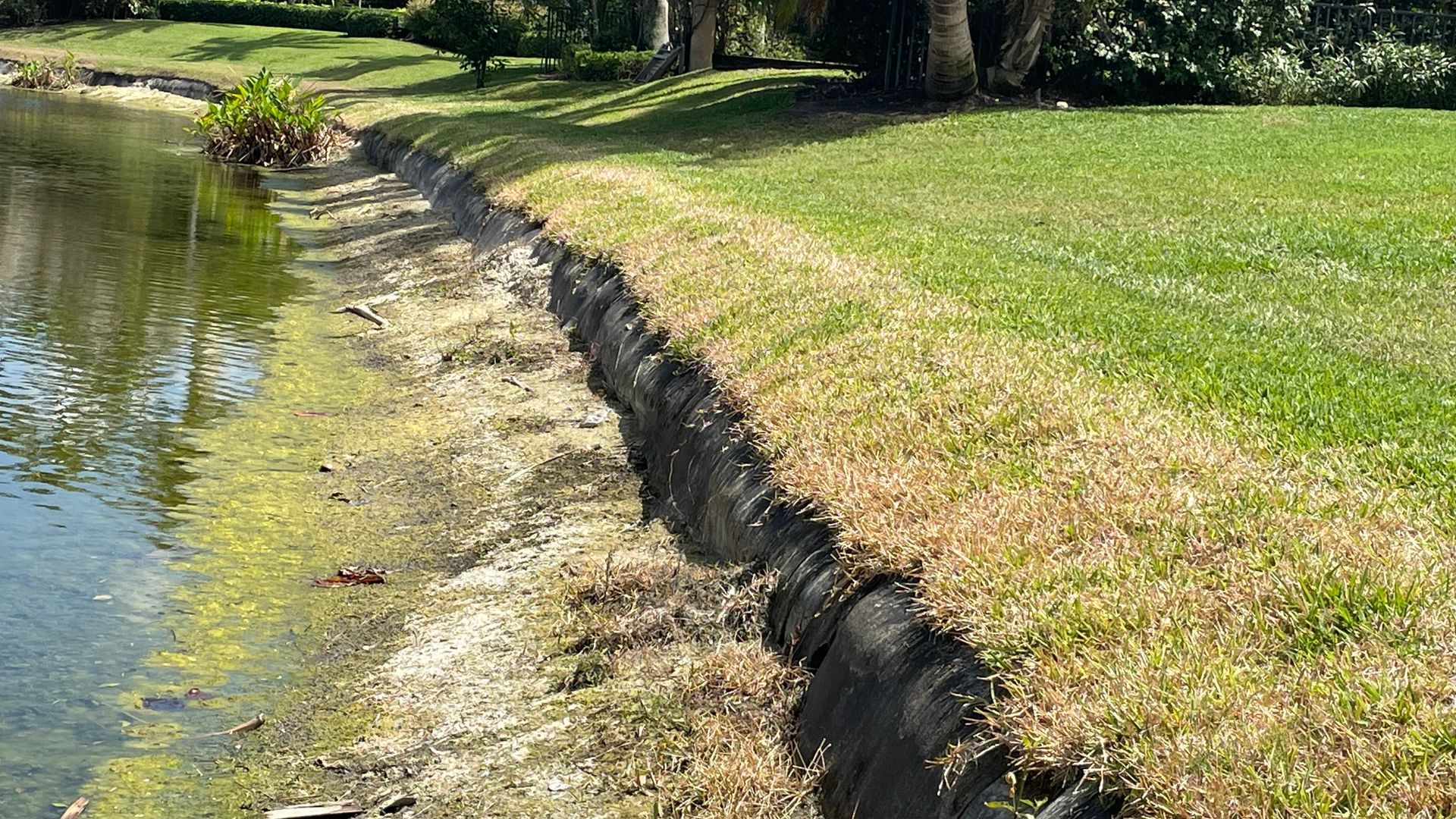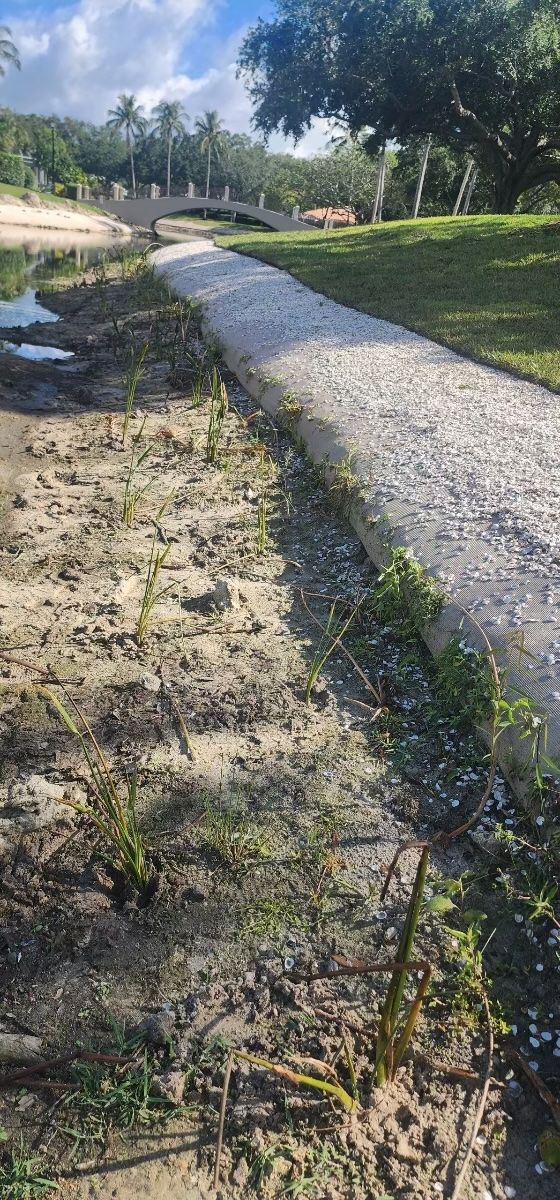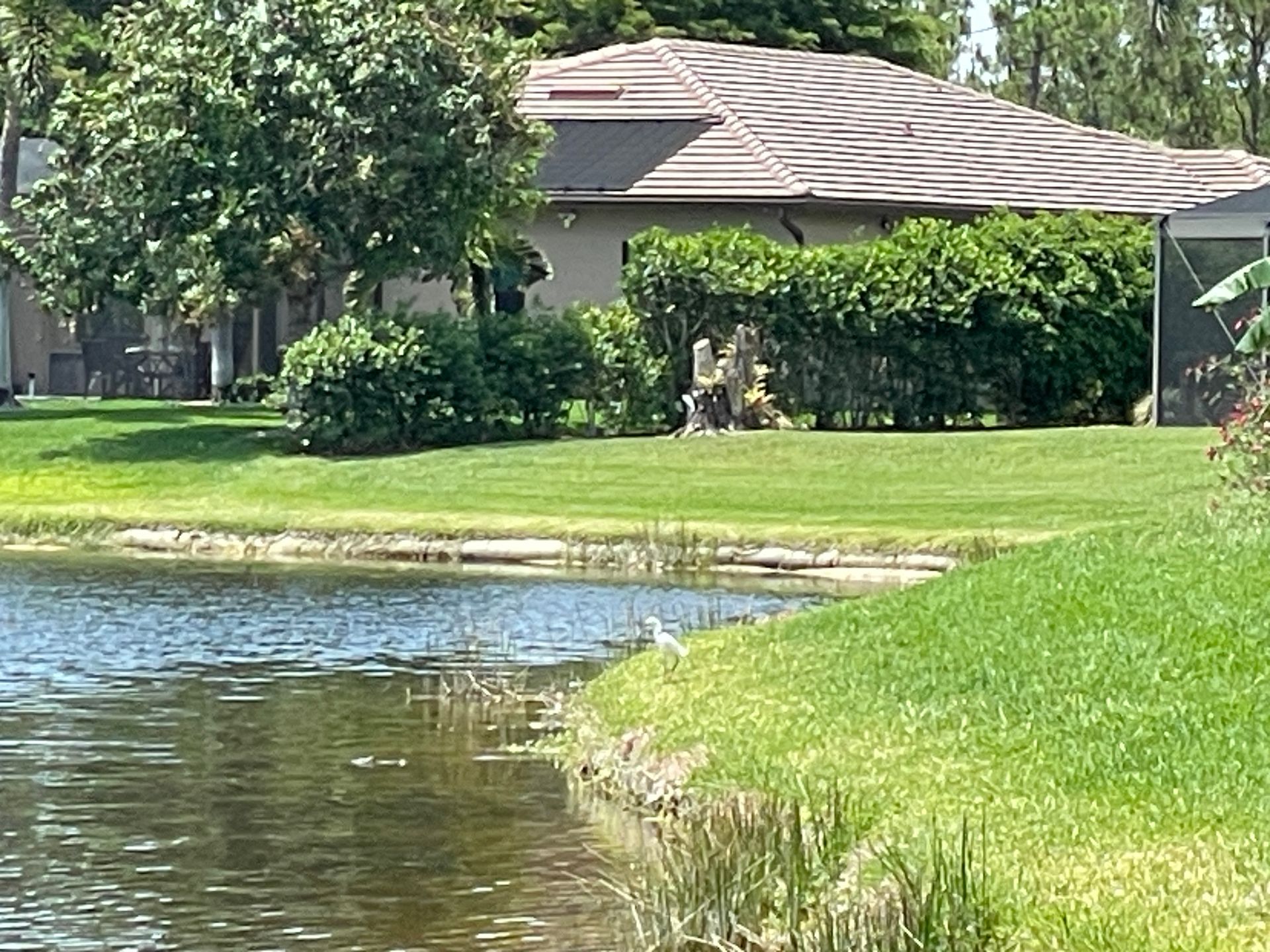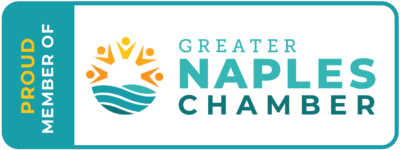Erosion Control - Methods and Maintenance
Marine construction is always on water, so there are naturally two Installation Methods employed to get the construction materials or aggregates to the shoreline: Installation by Sea or Installation from Land (below picture).
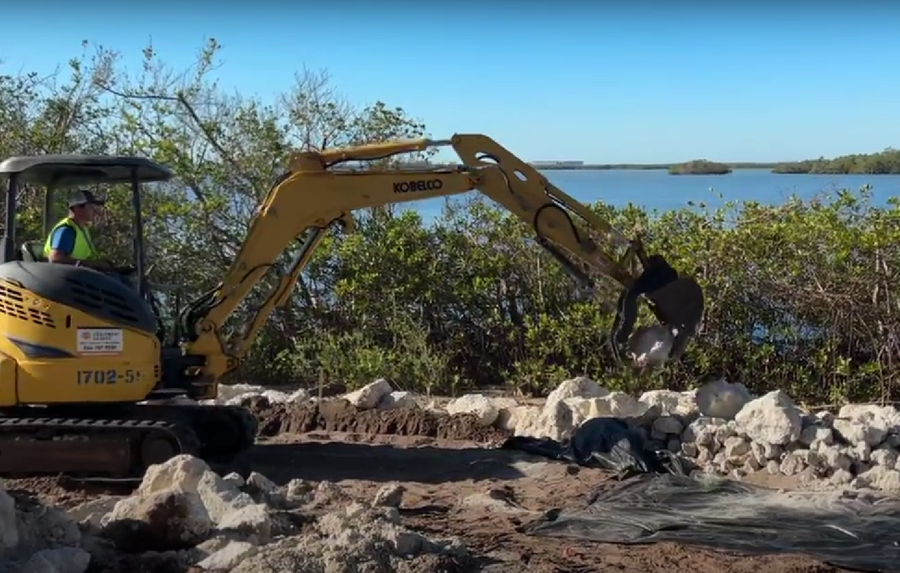
The proper method depends on the body of water and site conditions. Most marine contractors can work from sea, but not all can work from land. Sometimes shoreline restoration is done from land by lawn care companies and environmental companies without proper permits. Avoid this at all costs!
Surveying to Determine Land Loss must be done by civil engineers to calculate how much land has eroded down into the water. This will show how much property has been lost. Sometimes, property loss is required to be restored back to the original Development Order by means of Excavating to Reclaim Land, but this can be very expensive. More often, a permit will require the shoreline to simply be stabilized to help mitigate further erosion, in which case horizontal land (property) is not restored.
Lake Mapping and Bathymetric Surveying is the process of launching a boat onto a lake and using sonar to create a 3-D image of the bottom of the lake. This is helpful in determine whether or not the lake still meets its original specifications and permits. It can also reveal whether or not extensive dredging is needed in order to correct lake depths and improve overall lake health and function.
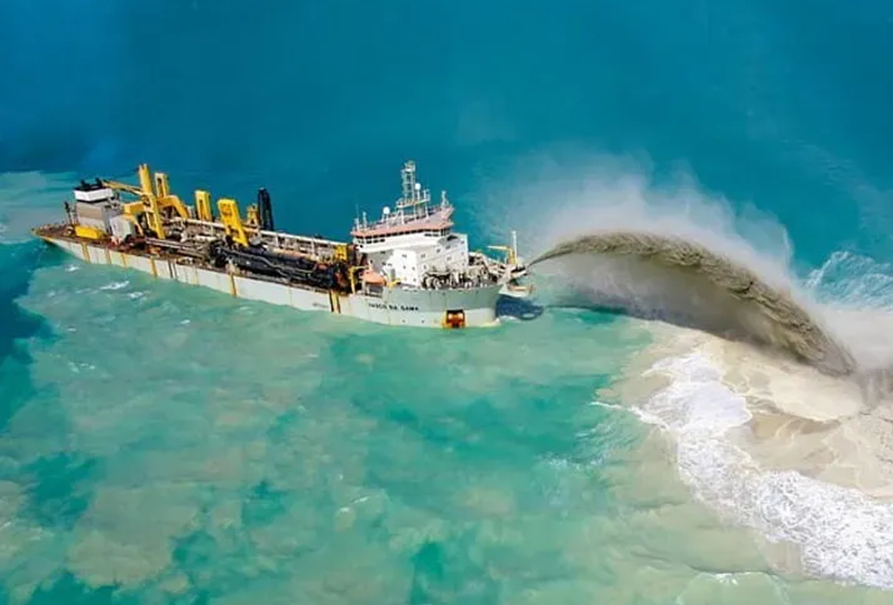
Dredging (above picture) is the practice Excavating and Reclaiming Eroded Material that is generally located at the bottom of a body of water and placing it up on the shoreline. It is the preferred method for places like Sanibel and Captiva Islands which have been dramatically damaged and eroded by hurricanes in the early 21st century. Here, the dredged material is pulled up miles off the coast and transported to the islands for reconstruction and Beach Renourishment. However, Dredging on Lakes, Ponds, Canals, and Rivers where the soil that has eroded contains a lot of silt is not a good practice.
Tying into Rainwater Drainage and Piping often goes hand-in-hand with a shoreline stabilization project as it is the first line of defense when it comes to the hydrogeology of a lake and the overall community. Rainwater starts its journey into the lakes by falling on roofs and yards. Arresting the water early can be accomplished with different Types of Systems. Connecting systems to rain gutters on Private Property can be difficult to coordinate with each homeowner and can lead to issues involving permission, property boundaries, and warranty repairs. Conversely, confining your drainage systems to Lake Bank Easements, Utility Easements, and common areas will ease these burdens because there is no need for permissions.
Lake Maintenance is crucial to the health of any lake, pond, or waterway. Improper lake maintenance can exacerbate erosion along the lake banks and on lot lines. It can also affect the lake depth, native flora and fauna, and water quality.

Proper lake maintenance must be addressed by professionals and include a comprehensive plan involving Herbicidal Spraying, Water Treatments, Fish Stocking, Fountains and Aerators, Native Littoral Species, Exotic Littoral Species, Vegetative Buffers and Littoral Zones. Wetland Management is closely related to lake management and is required by the county and state to be kept up, otherwise code violations may be issued. Management involves Exotics Control as well as Inspections and Reporting.
Recent Posts
